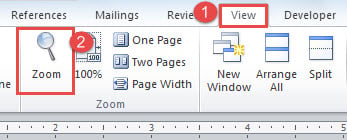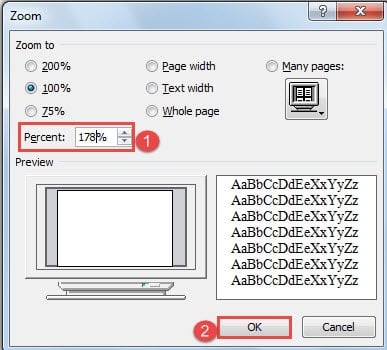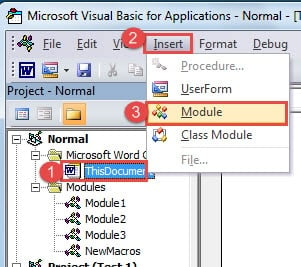In this article, there will be 2 different ways for you to change the default zoom level of your Word document to meet your specific need.
Generally, Word displays the document zoom level at 100%. This is a broadly accepted setting. However, situation varies from case to case. Let’s say, you have certain requirements for document font, such as the size, yet you just want things look bigger on your screen. Then altering the zoom level shall be helpful. Or sometimes due to different monitors, larger zoom level is required.
Now the question is how can we have a fixed zoom level at what we want for Word document instead of the default 100%? It will be much more convenient.
Below are 2 methods to accomplish this task.
Method 1: Modify Zoom Level for Future Documents
- Firstly, open Word to create a new document.
- Then click “View” tab.
- Next click “Zoom”.

- In “Zoom” dialog box open, you can either choose a value in “Zoom to” part or input a specific value in the “Percent” spin box.
- Lastly, click “OK”.

Here is the video:
Now, the zoom level of the document you just create will change to the value you choose, and so do all future documents.
Note: When you open Word next time, the default zoom level should be different. By the way, the documents you created before shall remain in the original default level.
Method 2: Change Zoom Level for Previous Documents
As we’ve mentioned above, method 1 only affect new files created after the setting. Then what about those previous documents? Method 2 is architecture to solve this problem. The solution is to use VBA codes to work the magic.
- To begin with, open an existing file.
- Then press “Alt+ F11” to open the VBA editor.
- In the VBA editor, click “ThisDocument” under “Normal” project on the left.
- Next, click “Insert”.
- Then choose to click “Module” on the list.

- Now double click the new module to open the editing area on the right side, and paste the following codes there:
Sub AutoOpen() ActiveWindow.ActivePane.View.Zoom.Percentage = 125 End Sub
- Lastly, click “Run”.
You can check the demonstration below:
Note: The value “125” in the codes refers to the zoom level, so you can choose whatever number you like. Moreover, the setting will not change the default zoom level of future files.
Address Word File Corruption
For those of you who deal with office work, you are certainly familiar with Word. Yet, a great helper as Word can fail you out of the blue. Therefore to get an advanced damaged docx repair product should be on your to do list.
Author Introduction:
Vera Chen is a data recovery expert in DataNumen, Inc., which is the world leader in data recovery technologies, including corrupted xls file repair tool and pdf repair software products. For more information visit www.datanumen.com
